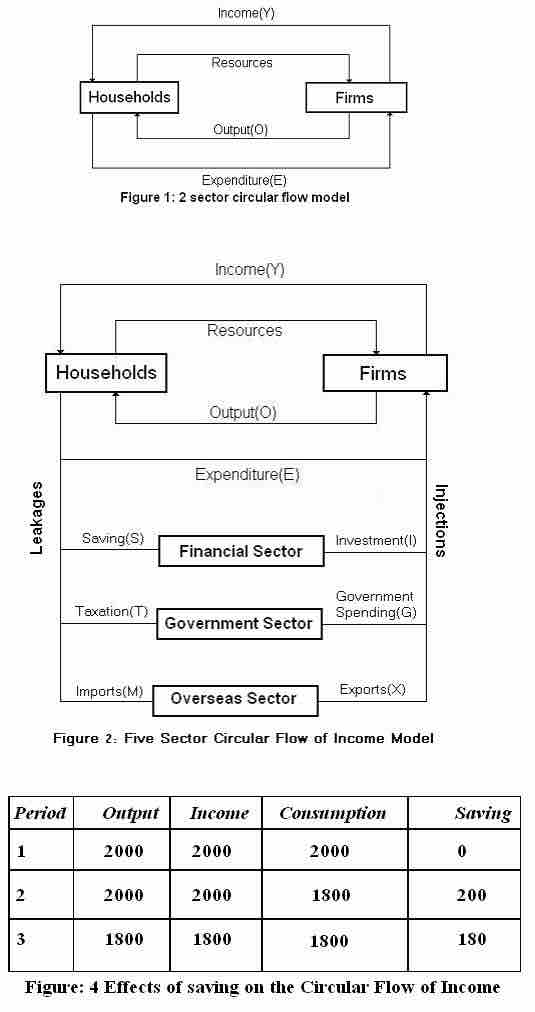In economics, the "circular flow" diagram is a simple explanatory tool of how the major elements as defined by the equation Y = Consumption + Investment + Government Spending + (Exports - Imports). interact with one another. Circular flow is basically a continuous loop that for any point and time yields the value "Y" otherwise defined as the sum of final good and services in an economy, or gross domestic product (GDP) .

Circular flow
The circular flow is a simplified view of the economy that provides an ability to assess GDP at a specific point in time.
In the circular flow model, the household sector, provides various factors of production such as labor and capital, to producers who in turn produce goods and services. Firms compensate households for resource utilized and households pay for goods and services purchased from firms. This portion of the circular flow contributes to expenditures on consumption, C and generates income, which is the basis for savings (equal to investment) and government spending (tax revenue generated from income).
Investment, I, is equal to savings and is the income not spent but available to both consumers and firms for the purchase of capital investments, such as buildings, factories and homes. I represents an expenditure on investment capital.
Income generated in the relationship between firms and households is taxed and the remaining is either consumed and or saved. Government spending, G, is based on the tax revenue, T. G can be equal to taxes, less than or more than the tax revenue and represents government expenditure in the economy.
Finally, exports minus imports, X - M, references whether an economy is a net importer or exporter (or potentially trade neutral (X - M = 0)) and the impact of this component on overall GDP. Note that if the country is a net importer the value of X - M will be negative and will have a downward impact to overall GDP; if the country is a net exporter, the opposite will be true.
Circular flow
The continuous flow of production, income and expenditure is known as circular flow of income. It is circular because it has neither any beginning nor an end. The circular flow involves two basic assumptions:
1. In any exchange process, the seller or producer receives what the buyer or consumer spends.
2. Goods and services flow in one direction and money payment flow in the opposite or return direction, causing a circular flow.